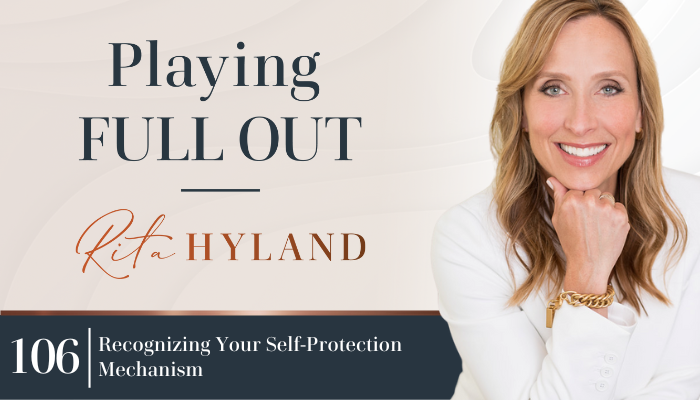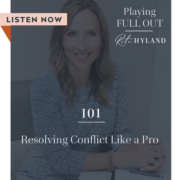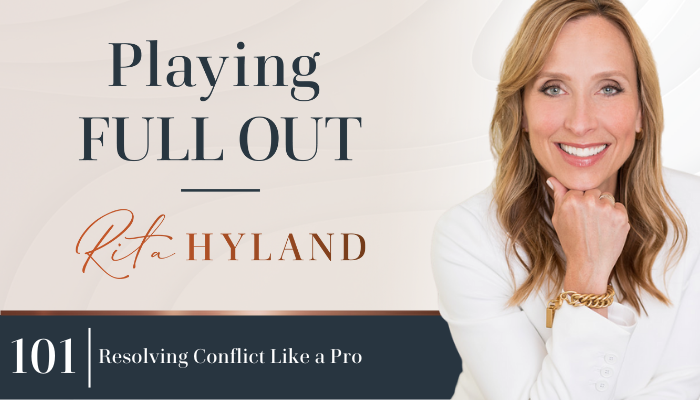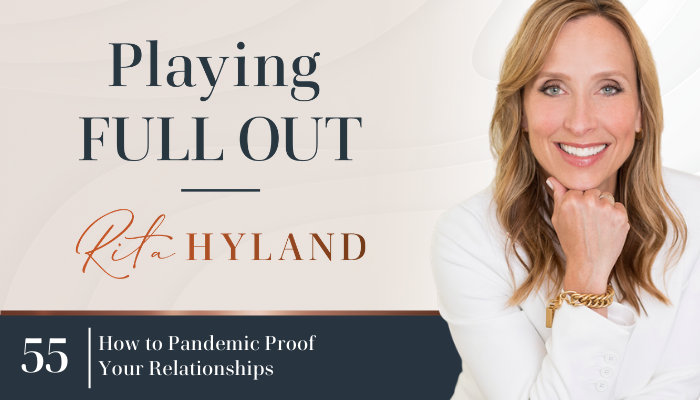Recognizing Your Self-Protection Mechanism

Listen to the full podcast episode to learn how to identify the coping strategies and self-protection mechanisms you employ when someone triggers you. By the end, you’ll know how to respond with vulnerability versus reacting with vigilance to end the self-sabotage and self-betrayal you may or may not realize you’re a part of in your relationships.
Today, I’m talking about the coping patterns and self-protection mechanisms we resort to when we feel triggered. Today, I’m going to show you how to comfort that conditioned part of yourself that for so long has behaved in a certain way as a means to self-preserve.
What is a self-protection mechanism?
A self-protection mechanism is a behavior or coping tool that we employ when a part of us doesn’t feel that it can manage or navigate a solution.
We may feel unsafe, that something’s out of control, or that we’re going to get hurt. So, we rely on certain behavior we’ve become conditioned to using to escape from the feelings we don’t want to feel.
Since we’ve repeated it for so long, it has become a pattern and the roots often stem from an experience in our childhood where we felt unsafe, hurt, afraid, angry, or resentful.
There are a lot of different self-protection mechanisms that we employ. They’re very unique and specific to each of us and we’ve created them to help us cope with feelings we don’t believe we can handle feeling again. So, these mechanisms become our automatic reactions, becoming habits and often causing us to sabotage our relationships – including the one with yourself.
How do we change our self-protection mechanisms and coping tools?
There are 3 steps that will help you move from reacting to responding and with vulnerability instead of vigilance:
Recognize your protection mechanism by looking at your patterns of behavior in relationships.
Becoming aware is an essential first step in experiencing the greatest version of yourself. Let’s do an exercise to get you started.
Think of one way you protect yourself in relationships. When someone says or does something that triggers you, what behavior are you most likely to respond with? One way to do this is to look at your last disagreement or a recent time you were triggered by someone. How did you handle it?
- Do you pretend you’re laid back not showing that you care to avoid getting hurt?
- Do you defer to filling others’ needs or wants and remain silent when it comes to yours?
- Do you resort to using sarcasm to protect yourself from being seen authentically?
- Do you keep people at a distance by becoming argumentative?
- When someone says or does something you don’t like, do you betray yourself, by not stopping a person if they’re coming against you?
- Do you refrain from asking for what you want?
- Do you allow others’ needs to supersede your own?
- Do you raise your voice as a means to shut someone down?
Witness yourself at the moment.
When you witness the moment, take a deep breath in and relax. Don’t run from it or numb yourself from feeling it. Just notice it. It’s key to see and name this mechanism for what it really is — a part of you that’s trying to protect you. So, instead of self-identifying or justifying it, just notice it.
Comfort yourself. Become friends with your protection mechanism and the part of you that’s protecting you.
Think of this mechanism as a good friend who has had your best interest at heart and has been looking out for you for a long time. Thank it for being there when you needed it to survive.
Begin to reparent yourself. Reparenting is the practice of relearning how to meet physical and emotional needs that your inner child or younger self may have not been able to take care of. Since these mechanisms developed during past times in our lives, you’ll most likely be having conversations with your younger self, giving your younger self what you needed at that very moment. Through reparenting, we are able to guide ourselves and really transform our subconscious where this protection mechanism is housed.
It can be hard to change our patterns of behavior because we’ve been using them without even realizing it for so long. For me, it took years after I began my self-protection mechanism to bravely speak up for myself and to do so from a place of clarity and love.
But when you get to know your specific protection mechanisms that show up when you’re triggered, your relationships will dramatically improve in every category of life.
You will speak with love, with clarity, and with boundaries. You will feel better because you’ll be responding from your healed and secure self.
By being aware of how you self-protect using the coping mechanisms specific to your needs, you stop leading your life from your past conditioning.
Your Call to Action for this week is to identify the self-protection mechanism that you use when you feel triggered. Become aware and witness it when you see it. Instead of running from the feelings you’ve tried not feeling for so long, breathe into the moment and relax. Then, take some time to become friends with that part of yourself that has protected you for so long, and thank it. Let it know it no longer needs to react as it always has because you no longer need to resist or run from those feelings.
In this episode I share:
- 3 steps to stave off the self-sabotage and self-betrayal that’s often associated with your conditioned protection pattern of choice
- The long-held patterns you resort to when you feel triggered and how you become conditioned to use these coping mechanisms
- A practice to befriend the part of you that is seeking to protect you but often costs you your happiness and success
Resources and related episodes:
- If you’d like to be notified of when new podcast episodes are released, you can do so here: Playing Full Out
- Learn more about the Inside Out Method
- Connect with Rita on LinkedIn.
Subscribe on Apple Podcasts for more tips, tools, and inspiration to lead the optimal vision of your life, love, and leadership. Remember, a half version of you is not enough. The world needs the fullest version of you at play.
___
About Rita Hyland
With over 20 years of experience as an executive and leadership coach, Rita helps leaders — emerging and established — excel in corporate and entrepreneurial environments.
Rita believes if leaders were more clear about how transformation really works and more intentional about creating what they want, their impact, success, and influence in the world would be unstoppable.
Through her coaching programs, private coaching, and masterminds, Rita shows leaders how to win consistently and create the impact and legacy they desire.
Central to Rita’s work is the understanding that you will never outperform your current programming, no matter how strong your willpower.
When you learn to use Rita’s proprietary Neuroleadership Growth Code, a technology that uses the best of neuroscience and transformational psychology to hit the brain’s buttons for change, YOU become both the solution and the strategy.
Her mission is to end talented, hard-working, and self-aware leaders spending another day stuck in self-doubt or confusion and not contributing their brilliant work and talent the world so desperately needs.







